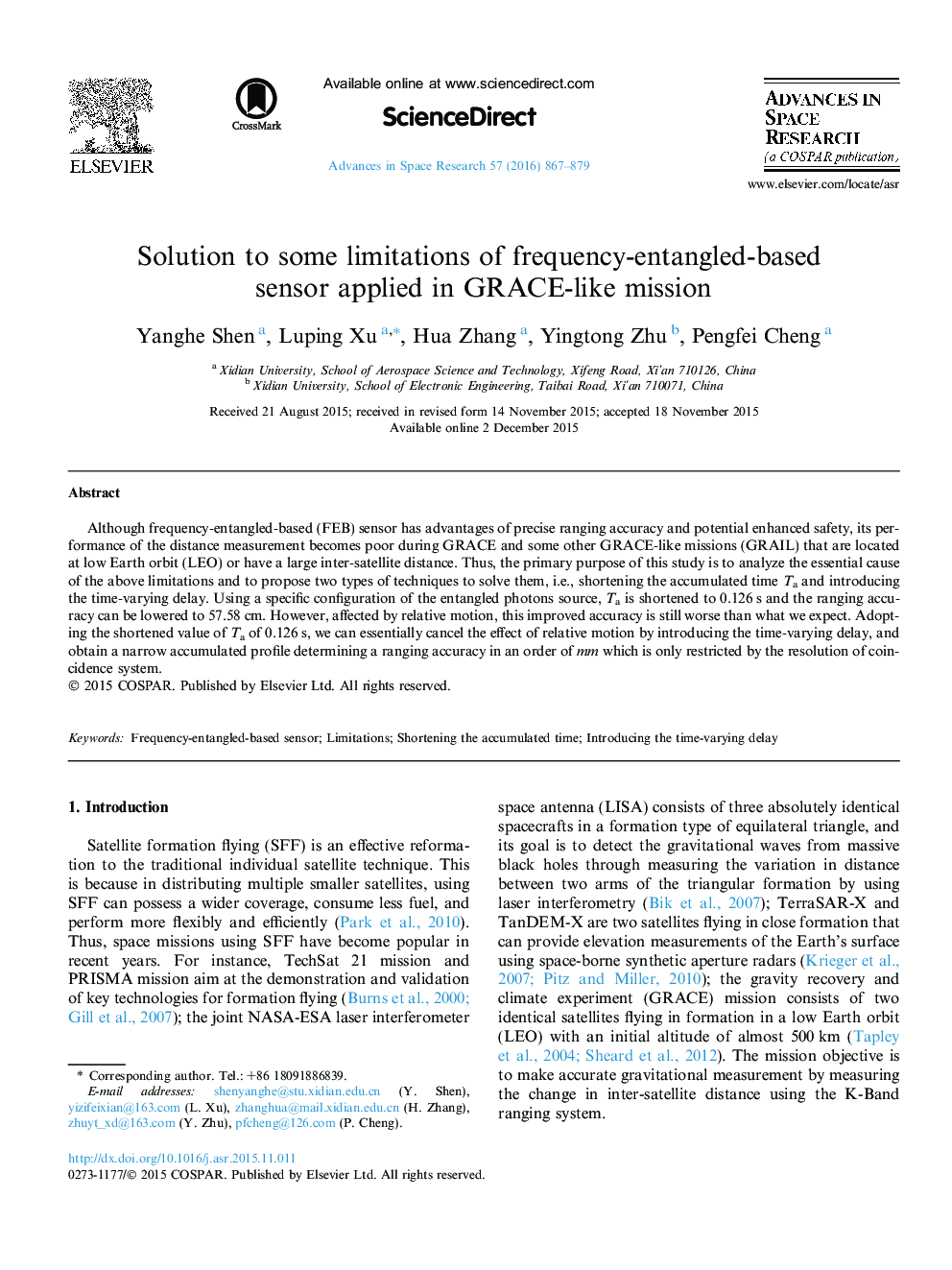| Article ID | Journal | Published Year | Pages | File Type |
|---|---|---|---|---|
| 10694123 | Advances in Space Research | 2016 | 13 Pages |
Abstract
Although frequency-entangled-based (FEB) sensor has advantages of precise ranging accuracy and potential enhanced safety, its performance of the distance measurement becomes poor during GRACE and some other GRACE-like missions (GRAIL) that are located at low Earth orbit (LEO) or have a large inter-satellite distance. Thus, the primary purpose of this study is to analyze the essential cause of the above limitations and to propose two types of techniques to solve them, i.e., shortening the accumulated time Ta and introducing the time-varying delay. Using a specific configuration of the entangled photons source, Ta is shortened to 0.126Â s and the ranging accuracy can be lowered to 57.58Â cm. However, affected by relative motion, this improved accuracy is still worse than what we expect. Adopting the shortened value of Ta of 0.126Â s, we can essentially cancel the effect of relative motion by introducing the time-varying delay, and obtain a narrow accumulated profile determining a ranging accuracy in an order of mm which is only restricted by the resolution of coincidence system.
Keywords
Related Topics
Physical Sciences and Engineering
Earth and Planetary Sciences
Space and Planetary Science
Authors
Yanghe Shen, Luping Xu, Hua Zhang, Yingtong Zhu, Pengfei Cheng,
